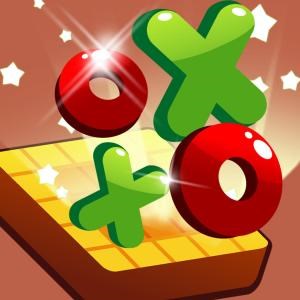
Snímky obrazovky:
Popis
Gomoku, also called Gobang or Five in a Row, is an abstract strategy board game. It is traditionally played with Go pieces (black and white stones) on a Go board, using 15×15 of the 19×19 grid intersections.[1] Because pieces are not moved or removed from the board, Gomoku may also be played as a paper and pencil game. The game is known in several countries under different names. Players alternate turns placing a stone of their color on an empty intersection. The winner is the first player to form an unbroken chain of five stones horizontally, vertically, or diagonally. It originated in Japan during the Heian period[citation needed]. The name "Gomoku" is from the Japanese language, in which it is referred to as gomokunarabe (五目並べ). Go means five, moku is a counter word for pieces and narabe means line-up. The game is also popular in Korea, where it is called omok (오목 [五目]) which has the same structure and origin as the Japanese name. The Japanese call this game Go-moku (five stones). In the nineteenth century, the game was introduced to Britain where it was known as Go Bang, said to be a corruption of the Japanese word goban, said to be adopted from Chinese k'i pan (qí pán) "chess-board."[2]

